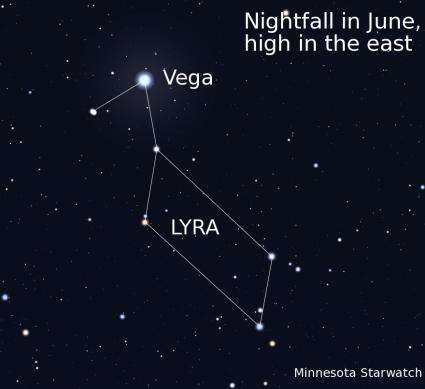Points North: Researcher Struggles To Fund Ruffed Grouse Research
| Attachment | Size |
|---|---|
| FinalCut_PN_20110120.mp3 | 8.31 MB |
Rocky Gutierrez likes to point out an irony of Minnesota game bird management. The state has two hunting stamps dedicated to specific birds—the ring-necked pheasant and the wild turkey. The irony is the pheasant is a nonnative species and the wild turkey, while arguably native to extreme southern Minnesota, is being introduced to broad areas of the state.
On the other hand, Gutierrez has found it difficult to secure research funding for Minnesota’s most abundant native game bird, the ruffed grouse. Gutierrez is the Gordon Gullion Endowed Chair in Forest Wildlife Research at the University of Minnesota, a position created in part to honor the dean of ruffed grouse research, the late Gordon Gullion. He has led a distinguished career in wildlife research, including work with endangered spotted owls in the Pacific Northwest and various game birds, including quail, pigeons and grouse. He came to the U in 2001 as the endowed chair.
Since then, he’s been frustrated by what he terms a “general lack of interest in ruffed grouse.” He worries that although grouse are common now, changes in forest management priorities and practices may have negative effects on future populations. Research now may help us make forestry decisions that favor the perpetuation of ruffed grouse and other forest wildlife.
Gutierrez works with graduate students on research projects in Minnesota’s forests, including the university’s 2,000-acre demonstration forest near Cloquet where Gullion did much of his grouse work. Over the past decade, the university has put about $480,000 into grouse research, while outside contributions have been minimal. Currently, Gutierrez is struggling to raise $35,000 annually to complete an ongoing study.
While Gullion learned much of what we know about ruffed grouse, especially their relationship with aspen trees, there is still much about the bird we don’t understand. For instance, biologists have long known grouse populations rise and fall in an ongoing 10-year cycle, but they don’t understand why the cycle occurs. Two competing theories are it is either related to increased predation or diminished quality of winter food.
For predation, a forest raptor called the goshawk gets the blame. During winters when snowshoe hares are not abundant further north, goshawks migrate into Minnesota and prey upon grouse. Some researchers believe they eat enough grouse to cause drastic population reductions. The food theory, favored by Gullion, was that male aspen catkins, a primary winter food for grouse, become unpalatable in some years. The lack of food in turn leads to fewer grouse.
Using a newer form of modeling, U of MN researchers were able to look at a number of factors—goshawk irruptions, tent caterpillar outbreaks in aspens, winter weather and more—to tease out what role they may play in the grouse population cycle. What they learned was that while goshawks may eat lots of grouse, they do not affect the overall abundance of the birds. Winter factors, including the palatability of aspens, and weather conditions, may lead to variations in populations, but are not the sole reasons for the cycle.
Gutierrez says we may never learn enough to be able to counteract the population cycle and have more stable grouse numbers, but we can manage forests in ways conducive to grouse and thereby have more birds during low points in the cycle. Providing good grouse habitat may become increasingly important as forest management priorities change to focus more on conversions to conifers, and the demand for additional forest products such as biomass fuel intensify harvests.
Working with the DNR, which has contributed research funding, Gutierrez is looking at how grouse use habitat. While it is commonly known grouse are closely associated with aspen trees, less is known about what may happen if the abundance of aspen is decreased, such as by planting more pines and other conifers. What they are learning is that grouse thrive in a forest with a mix of conifers and aspen—a common situation in northern Minnesota. However, in places where conifers dominate the forest, grouse will seek what Gutierrez calls “micro-sites” of deciduous cover, thickets, aspen clumps or brushy areas amidst the pines.
They are also learning not all aspen stands are used by grouse. He says there are places in the forest, even on DNR wildlife management areas, where past harvests were so intensive that no logs used by male grouse for drumming during the spring breeding season remain. Also, stands regenerating exclusively to aspen, containing few conifers or other tree species, harbor few grouse.
“I think we could do a lot of damage to ruffed grouse abundance by how we choose to manage forest lands,” says Gutierrez.
While there are many other critters in a Minnesota forest, what’s good for grouse is generally good for wildlife, especially in places where commercial timber harvest is the primary form of management. The places not used by grouse are typically human-manipulated monocultures—either naturally regenerating aspen following a clear-cut harvest, or pine plantations. Management strategies encouraging a mix of tree species are generally better for wildlife.
The problem is not everyone looks at the forest and sees the same thing. An ecologist may view increasing the conifer component as a way to move closer toward the natural condition, but a forester may choose to grow those conifers in an unnatural plantation. The trick is to strike a cost-effective balance that allows us to grow trees for human use and meet the habitat needs of native wildlife. Ongoing, applied research on ruffed grouse and other forest wildlife is crucial to achieving and maintaining that balance.
Airdate: January 21, 2011
Tweet






